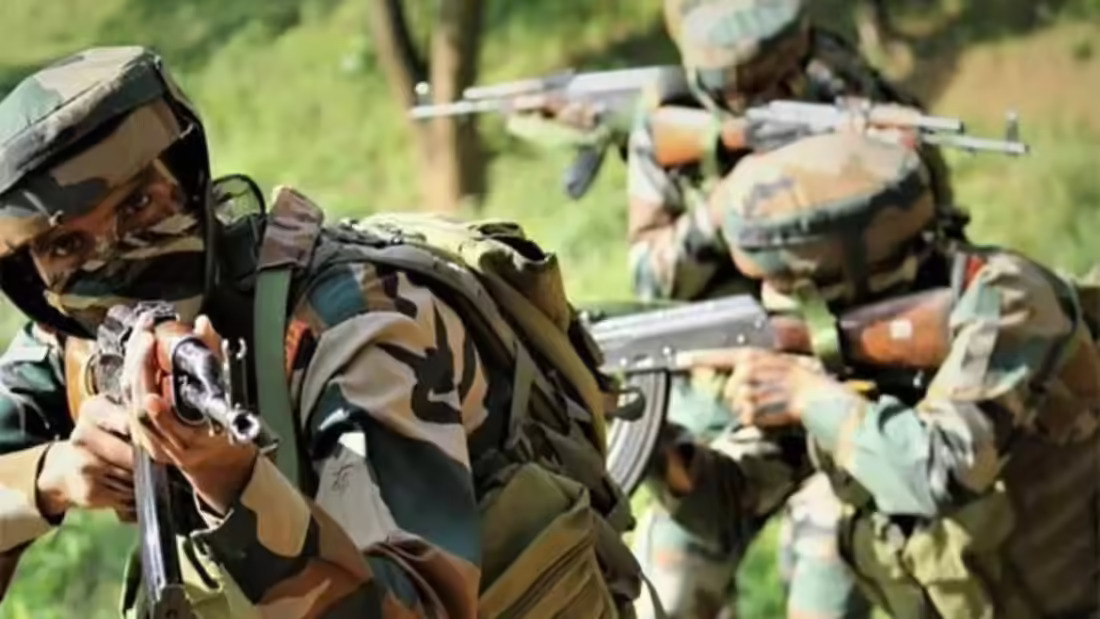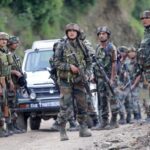Introduction: A Flashpoint in the Forests of Kulgam
The usually calm and forested area of Akhal in the Kulgam district of South Kashmir came into the national limelight when the valley was predawned on August 2, 2025. Indian security forces neutralised one of the terrorists in a carefully organised collaborative action against insurgents. The augmented tri-force operation with Indian Army, Jammu and Kashmir Police (Special Operations Group) of terror activities at Nowgam in the morning of August 1, started in late hours on August 1.

Operation Akhal codenamed, is indicative of the dynamic counter-terror synergies adopted by India, which are more toned, less invasive and community friendly. Although a single terrorist was killed, the operation is not limited to the casualty count but what is important is the message it signifies: the increasing dependency of India on precision-driven counterterrorism in an already volatile region as the past four decades have shown with regular anti-terrorist operations in the country.
The Operational Backdrop: Kulgam’s Strategic Sensitivity
Kulgam district which is located in the volatile southern belt of Kashmir Valley has over the years become a sensitive area- not only in terms of military but political and sociological sense as well. It is the abode of thick woods and sloping lands as well as small tight knit villages. These features give insurgents tactical cover as well as present a terrain challenge to security personnel.

Akhal is a minor forest pocket in the Devsar block of Kulgam and has attracted attention of late with suspected movement of infiltrators and foreign terrorists, especially those with past associations with the governments of Pakistan-based militant outfits like the Lashkar-e-Taiba (LeT) and the Jaish-e-Mohammed (JeM). Some recent intelligence inputs had recorded the presence of armed militants regrouping in these forest zones and as such, they may be gearing to conduct larger attacks or even recruits.
The Launch of Operation Akhal: Intelligence-Led Precision
On August 1, the local informant network collected actionable human intelligence which was confirmed at about 1700 hours by drone surveillance and satellite tracking. After the confirmation of militant presence in a makeshift forest hideout, the Chinar Corps (Indian Army) launched the cordon-and-search operation (CASO) accompanied by various other agencies. The silent encirclement later developed into a gun battle as militants tried to flee the encirclement. The ensuing battle was intense but limited, and it represented a new Indian mantra of fighting where collateral is low.
Nightlong Encounter: The Tactical Grind
The gun battle lasted the whole night in darkness with the whole situation ramped up in the morning when one of the terrorists was shot dead by the police after attempting to break the perimeter in a moment of relaxed situation. The body was recovered with strong security measures and by the time of this writing it was yet to be officially identified. Nonetheless, reports also showed that the killed person is believed to be of foreign descent, probably of Pakistani descent, as weapons, garments, and communication equipment have been found.
At this point, the operation is in progress and a combing and sanitization operation is underway in the surrounding zone to exclude the possibility of existence of more militants or weapon depots.
Key Forces Involved: Multi-Agency Synergy
Operation Akhal is strong in terms of its coordination model and this would act as a model in future operations in India against terror. The kind of forces used were:
- 34 Rashtriya Rifles: India Army specializing in warfare in mountains and forests.
- J&K Police Special Operations Group (SOG): Knowledge of the region and the mobility.
- 26 th Battalion CRPF- Ground and logistics control.
This trifold force mix could guarantee a situational superiority that would not overwhelm the civil life, a required change of conflict-sensitive locations.
Recovered Evidence: Arms, Intel, and Cross-Border Links
An initial post operation report provided that:
- One AK-47 assault rifle, magazines, and grenades
- Cellphone GPS units and a satellite phone
- Printed books in Urdu and Arabic
- Dried food and money (both Indian and Pakistani)
This data raises the possibility of cross border infiltration and the likelihood that the militant belongs to a larger network based in Pakistan-occupied Kashmir (PoK).
A Pattern Emerges: Akhal Aftermath and Operation Mahadev
The case of Operation Akhal is not an exception. Less than a week ago, the Indian security establishment had conducted an operation code-named Mahadev that was a high-profile operation in the Srinagar outskirts where three terrorists suspected of carrying out the April 2025 Pahalgam massacre were neutralised. The growing pace of these operations is a reflection of a change of policy of the Union Ministry of Home Affairs that has prioritized proactive counterinsurgency since the General Elections of 2024.
During a recent session of parliament, Home Minister Amit Shah reaffirmed the government’s zero tolerance policy on terrorism and confirmed that several Pakistan-trained terrorists had been killed in the last few weeks.
The Legal and Humanitarian Lens: Balancing Rights and Security
Successful counter-terror actions bring with them legitimate questions regarding civil liberty concerns, commands, and responsibility. In Kashmir where there is a lot of anger and not a lot of trust of state power amongst some of its citizens, any operations such as that of Akhal will also have to be judged on a humanitarian scale.
To avoid intelligence leaks to militant sympathizers, a temporary mobile blackout was reportedly maintained in civilian areas of Devsar. Nonetheless, there were no significant civilian disruptions as local law enforcement ensured that there were no blanket prohibitions or curfews, which are the common after effects of such incidents.
Consistent with provisions of the Supreme Court of India, regarding encounter operations, an independent inquiry panel would be set up to ascertain how the militant died, and whether there was any excess of use of force adhering to international law and upholding India s being a rule of law nation, committed to human rights.
Security Analysis: What Operation Akhal Reveals
1. Augmented Ground-based Intelligence
There are more confidence-building measures (CBMs), and Kashmiri youth have better integrated into civil governance, which has elevated local cooperation.
2. Technological Modernization
Thermal imaging drones and the use of AI-based surveillance as well as satellite monitoring has helped minimize the number of civilian casualties and collateral damage, an issue that was problematic in the previous operation in the 2000s.
3. No Formula Question
The era of mass operations, the village-scale curfew, is slowly being replaced by surgical, preemptive operations, resulting in minimal loss of life and liberty.
4. Psychological Warfare
These are not operations that are only military but also messages to financiers and handlers of terrorists on the other side of the border that infiltration is not a viable long-term feasibility anymore.
Public Sentiment: Fear, Fatigue, and Fragile Hope
Views of the local population in Kulgam have become rather mixed and more pragmatic. As fear is still present, particularly when gunbattles are happening, there is also saturation with the menacing regularity of violence. The young generation in Kulgam, as far as the rest of Kashmir is concerned, is craving education, jobs, and a life free of extremist ideologies.
The local head of the panchayat in Devsar, who did not want his name to be listed, said, People are seeking peace. Nobody is on the side of terrorists. We desire fairness and respect by security agencies also. This is the only way to go.”
What Lies Ahead
Operation Akhal is perhaps a minor tactical gain but its strategic influence can be massive. It also strengthens the capabilities of the Indian state to respond to terror threats swiftly and surgically, and not to use force indiscriminately. The fight over peace in Kashmir is not only military; it is ideological, emotional, and legal. The way out should be characterized by sustained counter-terror watchfulness, inclusive politics, and appreciation of democratic entitlements. In a region where each fired bullet reaches far beyond borders, India must strive to see to it that any counter terror mission also serves the greater cause of national integration, justice and peace.
Quick Recap: Operation Akhal Highlights
| Element | Detail |
|---|---|
| Operation Name | Operation Akhal |
| Date | Initiated August 1, 2025, concluded August 2 morning |
| Location | Akhal Forest, Devsar Area, Kulgam District, J&K |
| Forces Involved | Indian Army (Chinar Corps), J&K Police (SOG), CRPF |
| Outcome | One terrorist neutralised, combing operation continues |
| Weapons Recovered | AK-47, grenades, GPS devices, satellite phone |
| Suspected Affiliation | Pakistan-based terror outfit (unconfirmed) |
| Civilian Impact | Minimal; temporary blackout, no curfew imposed |
The Vue times will keep on tracking what happens at Kulgam region in the future updating this report as more confirmed details come in.










